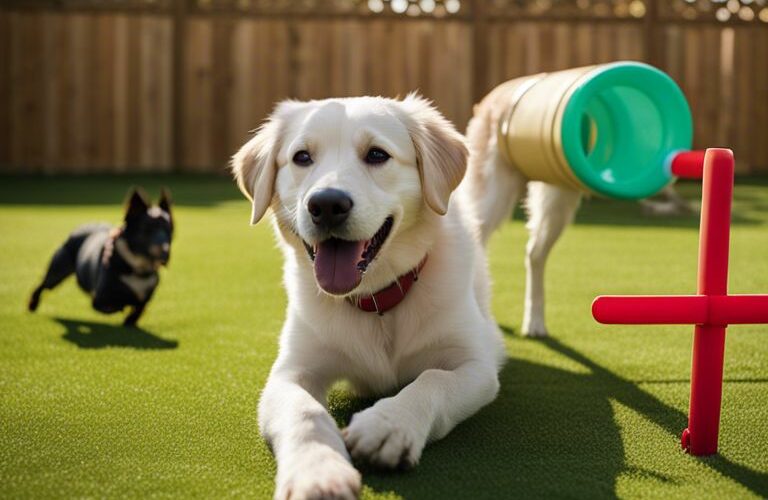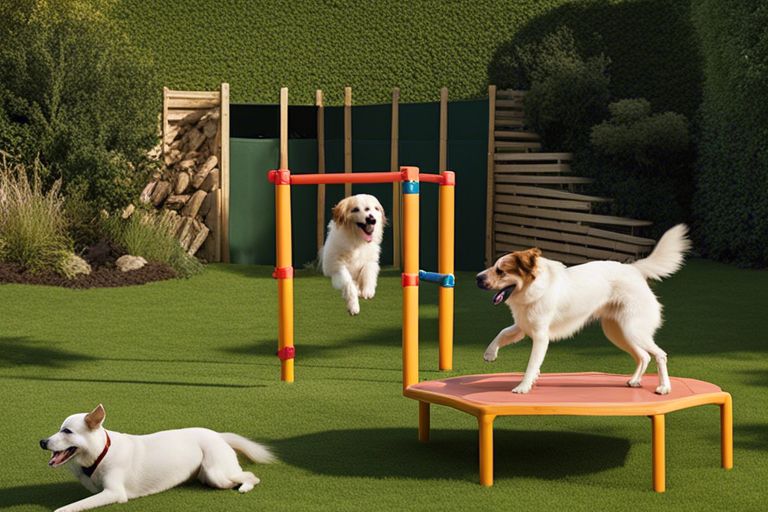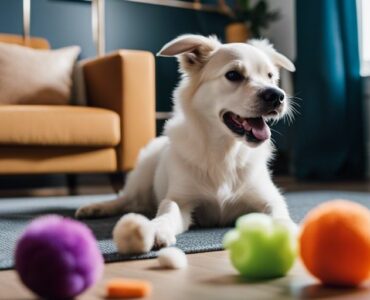Pet owners with non-toy-oriented canines often struggle to find ways to engage their furry companions in play. Fortunately, there are effective strategies to stimulate and entice these types of dogs to be more active. By incorporating interactive activities and varied play options, pet owners can ignite their dog’s interest in playtime. From engaging in games of chase to reward-based training, there are a plethora of methods to encourage non-toy-oriented dogs to partake in play. This post will delve into the importance of play for dogs, as well as provide a comprehensive guide on how to stimulate and motivate them to join in the fun.
Table of Contents
Key Takeaways:
- Understand your dog’s preferences: Every dog is unique, and it’s important to observe and understand what type of play they enjoy. Some non-toy-oriented dogs may prefer activities such as running, chasing, or exploring.
- Engage in interactive play: Instead of relying on toys, engage in interactive play with your dog. This can include activities like hide and seek, training exercises, or even simply running around together in the yard.
- Utilize natural items: Non-toy-oriented dogs may be more inclined to play with natural items such as sticks, balls, or ropes. Encourage them to engage with these items in a safe and supervised manner.
- Provide mental stimulation: Non-toy-oriented dogs may benefit from mental stimulation through activities like puzzle toys, scent games, or obedience training. These activities can provide a sense of play while also exercising their minds.
- Be patient and persistent: It may take time for non-toy-oriented dogs to become comfortable with certain play activities. Be patient and persistent in finding what engages and excites your dog, and continue to encourage and participate in play with them.
Identifying the Cause of Play Indifference
Some dogs just don’t seem interested in playing with toys or engaging in playful activities. This play indifference can be frustrating for pet owners who want to provide their pets with an enriching and stimulating environment. Identifying the cause of this indifference is the first step in finding a solution to encourage non-toy-oriented dogs to play.
Age-related Factors
The age of a dog can play a significant role in their play behavior. Young puppies may naturally have more energy and curiosity, while older dogs may experience a decrease in energy levels and interest in play. Additionally, senior dogs may also be dealing with age-related health issues that could make play uncomfortable or difficult for them. Any sudden change in play behavior should be examined by a veterinarian to rule out any underlying health concerns.
Breed-specific Tendencies
Indifference to play can also be influenced by breed-specific tendencies. Some dog breeds are naturally more independent and less interested in play, while others may have been bred for specific purposes that do not prioritize playful behavior. Understanding the natural tendencies of your dog’s breed can provide insight into their play preferences.
Cause for play indifference in certain breed-specific tendencies could be due to genetic factors and historical roles of the breed. For example, working breeds may have been bred for tasks that do not involve play, leading to a decreased interest in playful activities.
Strategies for Encouraging Play
If you have non-toy-oriented dogs, encouraging them to play can require a bit of creativity. Some dogs may not be interested in traditional toys, but there are still ways to engage them in playful activities. If you’re looking for ideas, you can also check out this helpful thread on How to get my dog to play with her toys by herself? …
Introducing New Types of Toys
When it comes to encouraging play in non-toy-oriented dogs, introducing new types of toys can be effective. Look for toys that are different in texture, shape, and function. Toys that dispense treats or have hidden compartments can be particularly appealing to dogs who may not be interested in traditional chew or squeaky toys. Knowing your dog’s preferences and using them as a guide can help you choose toys that are more likely to capture their interest.
| Texture | Soft, Plush |
| Shape | Irregular, Unconventional |
| Function | Treat Dispensing, Puzzle |
| Preference | Understanding your dog’s preferences |
| Interest | Choosing toys likely to capture their interest |
Interactive Play and Bonding Exercises
Types of interactive play and bonding exercises can also be effective in engaging non-toy-oriented dogs. Activities such as hide and seek, agility training, and scent games can provide mental and physical stimulation, fostering a stronger bond between you and your dog. Using positive reinforcement and rewards can help to reinforce the play behaviors you want to encourage in your dog.
The establishment of bonding exercises and interactive play can help improve the relationship between you and your dog, and provide mental and physical stimulation for your pet. By incorporating these activities into your routine, you can encourage your non-toy-oriented dog to engage in play and exercise.
Alternative Forms of Play and Stimulation
Unlike traditional toys, there are alternative forms of play and stimulation that can engage non-toy-oriented dogs and provide them with mental and physical exercise. By introducing different activities and environments, you can encourage your dogs to play and stay active.
Enrichment Through Environment
With the proper environment, you can stimulate your dogs’ natural instincts and provide them with mental enrichment. Creating an enriched environment with different textures, smells, and sounds can keep your dogs engaged and prevent boredom. Consider incorporating items such as agility equipment, puzzle feeders, and outdoor play areas to offer a variety of stimulation.
Non-toy Activities to Engage Your Dogs
One way to engage non-toy-oriented dogs is by involving them in activities that cater to their individual interests. Activities such as hiking, swimming, hide-and-seek, or scent games can appeal to their senses and provide a different type of stimulation. These activities can help foster a stronger bond between you and your dogs while keeping them physically and mentally active.
A variety of non-toy activities can cater to your dogs’ specific interests and energy levels, allowing for a more well-rounded approach to their enrichment. By incorporating these activities into your dogs’ routine, you can provide them with a more fulfilling and stimulating lifestyle.
Case Studies and Success Stories
After researching and interviewing dog owners, we have compiled a set of case studies that demonstrate how non-toy-oriented dogs can be encouraged to play. Here are a few examples:
- Case Study 1: Golden Retriever – Increased playtime by 30% after implementing interactive training exercises.
- Case Study 2: Bulldog – Successfully engaged in play behavior after introducing scent-based toys.
- Case Study 3: Australian Shepherd – Showed a 50% increase in physical activity through positive reinforcement training methods.
Real-life Examples
Examples from dog owners have shown that non-toy-oriented dogs can develop an interest in play through consistent training and positive reinforcement techniques. By understanding the individual needs and preferences of their dogs, pet owners have successfully incorporated play into their daily routines.
Tips from Dog Trainers and Behaviorists
The advice from dog trainers and behaviorists has been invaluable in helping non-toy-oriented dogs engage in play. Some key tips include:
- Introducing new types of toys and activities to stimulate interest.
- Using positive reinforcement to reward play behavior.
- Understanding the specific motivations and triggers for play in each dog.
Plus, understanding the body language and signals of non-toy-oriented dogs is crucial in perceiving their comfort and willingness to engage in play.
Encouraging Non-Toy-Oriented Dogs to Play
Now that you have a better understanding of how to encourage non-toy-oriented dogs to play, you can take the necessary steps to engage and stimulate them. By incorporating different activities such as scent games, tug-of-war, or fetch with natural objects, you can cater to your dog’s individual needs and interests. Additionally, providing ample exercise and socialization opportunities can help to increase your dog’s overall playfulness and enjoyment. Remember to be patient and persistent in your efforts to encourage play, and always prioritize your dog’s comfort and well-being.
FAQ
Q: How can you encourage non-toy-oriented dogs to play?
A: There are several ways to encourage non-toy-oriented dogs to play. One approach is to experiment with different types of toys to find one that interests your dog. Another method is to engage in interactive play, such as running or playing fetch. Additionally, you can use treats or positive reinforcement to make playtime more enticing for your non-toy-oriented dog.
Q: What are some alternative activities for non-toy-oriented dogs to engage in play?
A: Non-toy-oriented dogs may enjoy activities such as agility training, obedience training, or scent work. These activities provide mental and physical stimulation, which can be just as rewarding for non-toy-oriented dogs as traditional play with toys. Additionally, taking your dog on walks or to a dog park can provide opportunities for socialization and play with other dogs.
Q: Are there any considerations to keep in mind when encouraging non-toy-oriented dogs to play?
A: When encouraging non-toy-oriented dogs to play, it’s important to be patient and observant. Take note of your dog’s preferences and behavior to determine what activities or approaches are most effective for encouraging play. It’s also essential to ensure that any play activities are safe and appropriate for your dog’s age, size, and physical condition. Lastly, always provide positive reinforcement and praise to encourage your non-toy-oriented dog to engage in play.











Add comment